“Mountaineering requires not only will power, but also a lifestyle commitment. Not respecting the mountains is dangerous…”
The will of a passionate trekker is the one thing that has also fascinated me. Its like they welcome life through the most thrilling of paths, not sure of their journey, but always aware of their destination. While some people do daring treks as a lifestyle option, some just do it once in a while to take a break from their daily routine. Either ways you need a courageous heart to walk down the trail of the Everest base camp! And one such person is ARNAV GUPTA, who let me have a read of his travel diary, sharing his exhilarating experiences of his one such lifetime trek, from the start to the end…
From the daily diary of ARNAV GUPTA…
The start – A 90 minute flight from Delhi, Kathmandu is a popular hub for budget travelers. The narrow corridors of Thamel, the tourist district, offer all varieties of shopping and dining options. The crowds are largely Europeans who come for trekking and an assortment of neo-hippies who were gathering for a forest music festival. Despite all the action in Kathmandu, I was happy to depart for the trail-head in Bhandar.
A twelve hour bus ride over the mountainous terrain, and we arrived just before sunset. From Jiri, to reach Everest Base Camp, you have to cover 200 km’s on foot. Unlike many other treks in Nepal such as the popular Annapurna Circuit, the Everest trail consists of steep assents followed by steep descents. Rarely is the trail flat.
Although it is well known that this is the highest trekking route in the world, many first time trekkers attempt it as well. This was slightly amusing to watch, as the helicopter rescues began early, even before Everest was in sight.
My first day on the trail was the toughest day of the trek. The 8 hour, 2,000 meter assent to Lamjura Pass while carrying a fifteen kilo pack had me reconsidering my readiness for this trek. However, a good meal of “dal-bhat” (rice and lentils) had me refreshed. Dal-bhat is the national staple of Nepal, consumed for almost every meal, especially in poorer regions.
A typical day started with a 4 am wake up, a 5 am breakfast, and by 6 am I hit the trail. Starting early allowed me to maintain a relaxed pace and also to avoid walking in the mid-day heat. It is also a habit acquired from those wilderness treks where you reach your campsite by evening only to find that the water-source has dried up. Starting early can prevent you from having to walk another 4-5 hours in darkness. I would reach my lunch spot by noon, and find a nice place to lay out. I kept my lunches light.
Egg-noodle soup or veg-momos provided the right amount of quick burning carbs. The “tea-houses” along the route are a major convenience for trekkers as you don’t have to cook your own meals or carry a tent. For 1000 Nepali Rupees I had three good meals and a comfortable bed for the night.
The first week on the trail takes you through the foothills of Khumbu Valley. The rhodenderon forests are bursting with bright pink flowers in mid-April and provide welcomed cover from the sun. Travelling without a guide or porter requires map reading skills and a compass at times. The first week on the trail is sparsely populated with trekkers due to the new airport in Lukla. Nowadays, most people fly directly over the foothills and land at an elevation of 2,500 meters. Having seen the chaos at Lukla Airport last year, I decided to walk both in and out and avoid Lukla all-together. Travelers can be stranded in Lukla for up to a week depending on weather conditions. It is also recognized as the most dangerous airport in the world – the devils airport.
After bypassing the airport, I was a bit shocked to see how crowded the trail had become from the adjoining Lukla traffic. Most of these climbers would head to Namche Bazaar (3,500 meters) the next day. In Namche, many trekkers complained of the symptoms of altitude. If these symptoms begin at 3,500 meters, it is very difficult to climb higher as you then risk pulmonary edema. Namche Bazaar is a major trail town with many of the comforts of home. The local pubs are lively and full of elated trekkers returning from their respective expeditions.
Once above 4000 meters, you are recommended to ascend no more than 500 meters in elevation per day. The days become shorter and you often reach your destination by lunch time. The landscape changes dramatically as trees begin to disappear, and are replaced by low-lying shrubs, rock and snow. The starkness of the landscape is contrasted by glimmering peaks that seem to rise and envelop you. The air becomes drier and the evenings colder.
I would typically reach my lodge by noon and have a quick lunch. After storing my pack, I would find a side trail to climb to the elevation that I planned to sleep at the next day. On one such ascent up a 5,500 meter peak, I felt the effects of altitude. It began with shortness of breath and slowly turned into a headache. At this elevation your body receives fifty percent less oxygen than at sea level. Your movement had to become more efficient or you begin to feel uncoordinated and sluggish. Climbing to the elevation that you plan to sleep at the next day is a great way to acclimatize.
At Gorak Shep (5140 meters), I met a number of Sherpa’s whose clients were bedridden from altitude. They were three hours short of their goal of Kala Pattar (5,550 meters), yet were unable to continue. One Sherpa who has summited Everest nine times told me: “Mountaineering requires not only will power, but also a lifestyle commitment. You can’t eat rich, oily foods, meat, alcohol or smoke. These all cause the body to overwork and not enough blood reaches your brain if it is busy digesting heavy foods. Not respecting the mountain is dangerous.”
The end – Base Camp proved as expected, a disappointment. Just a bunch of tents really. However, Kala Pattar provided an excellent sunrise view of Mount Everest (8,848 meters)…
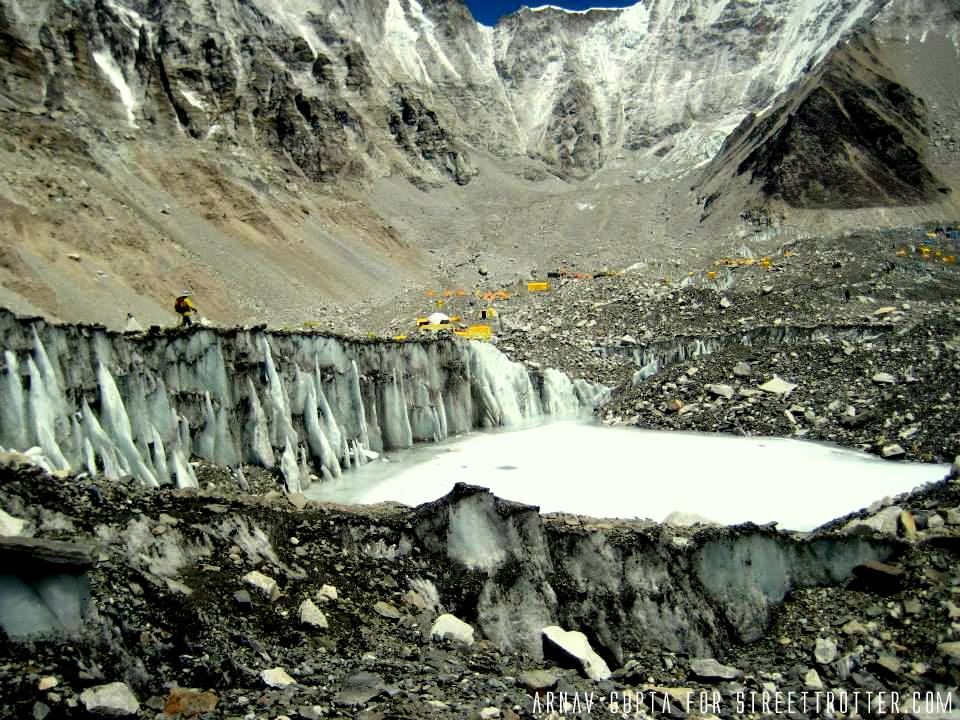
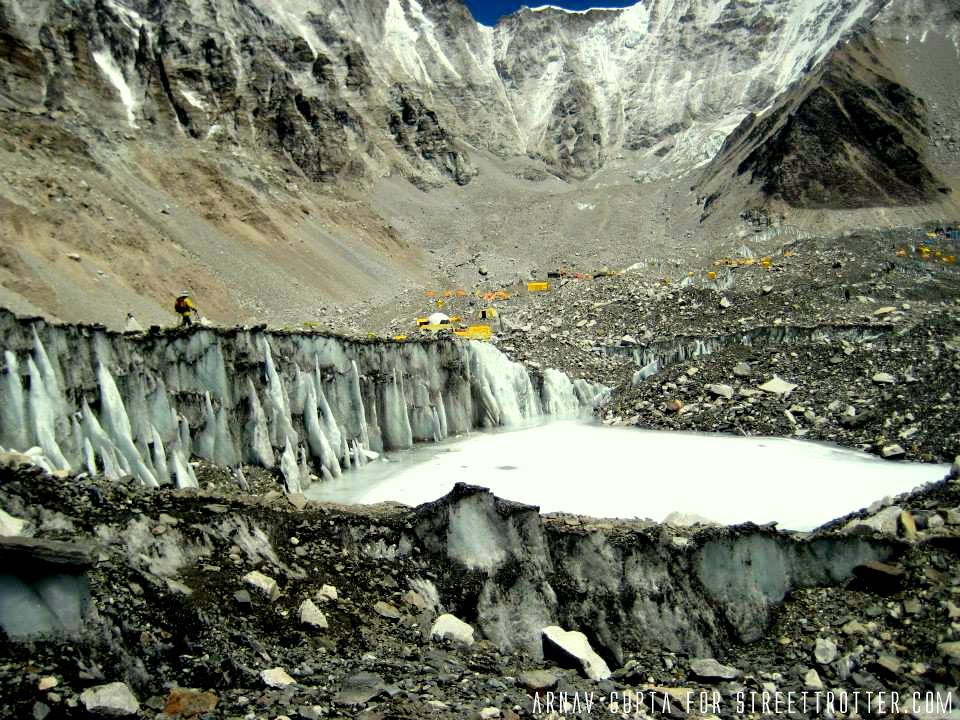
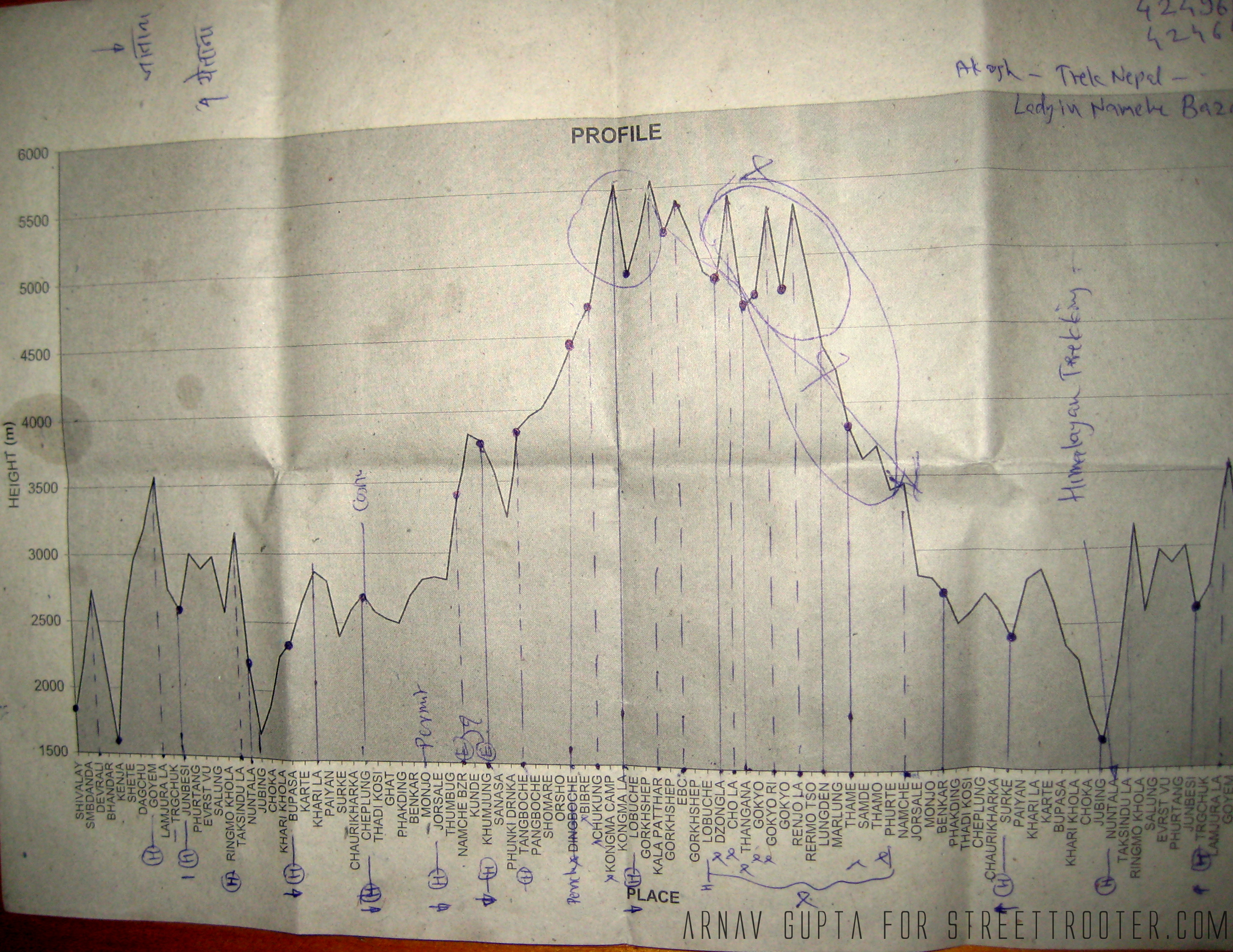
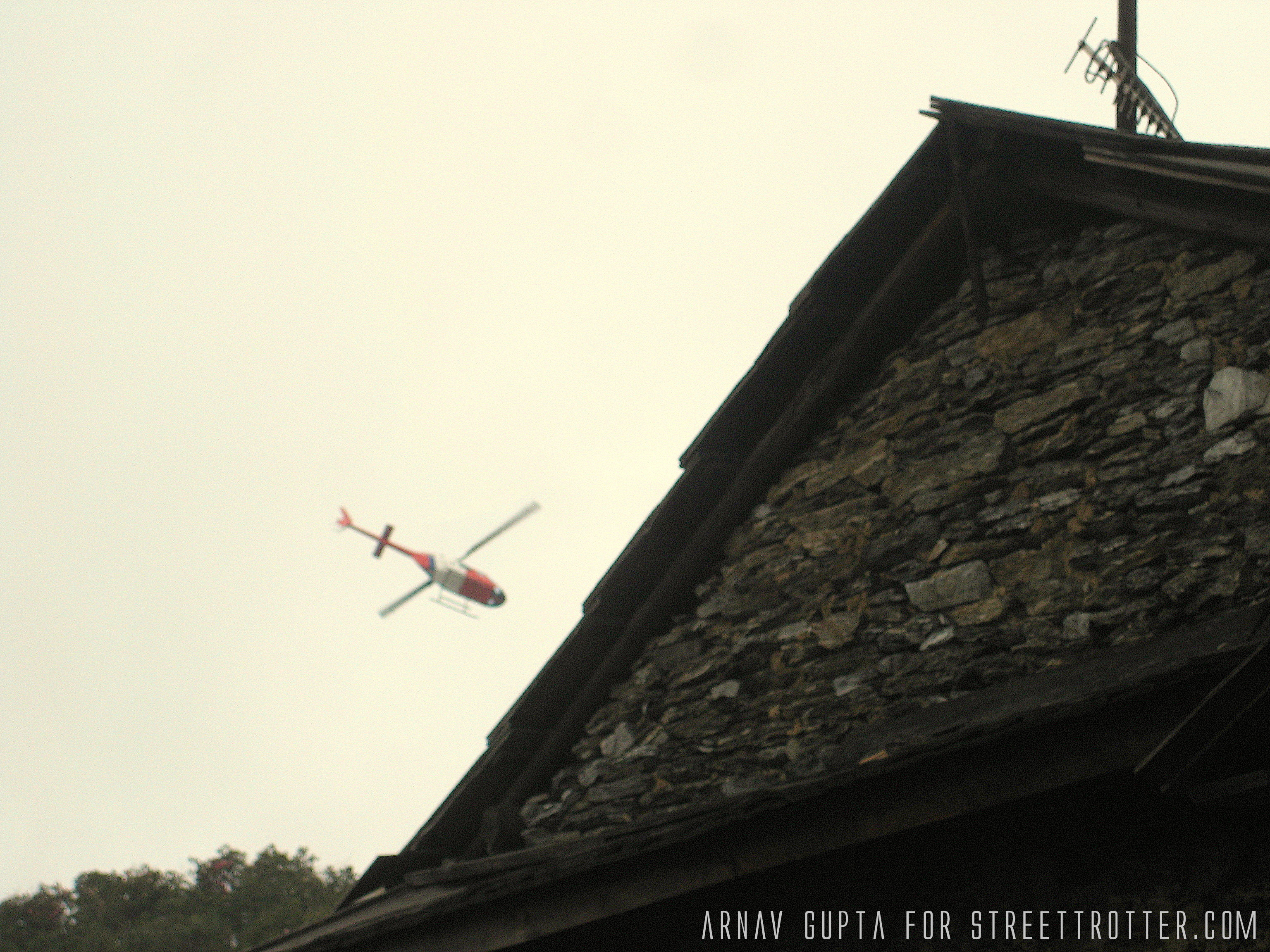
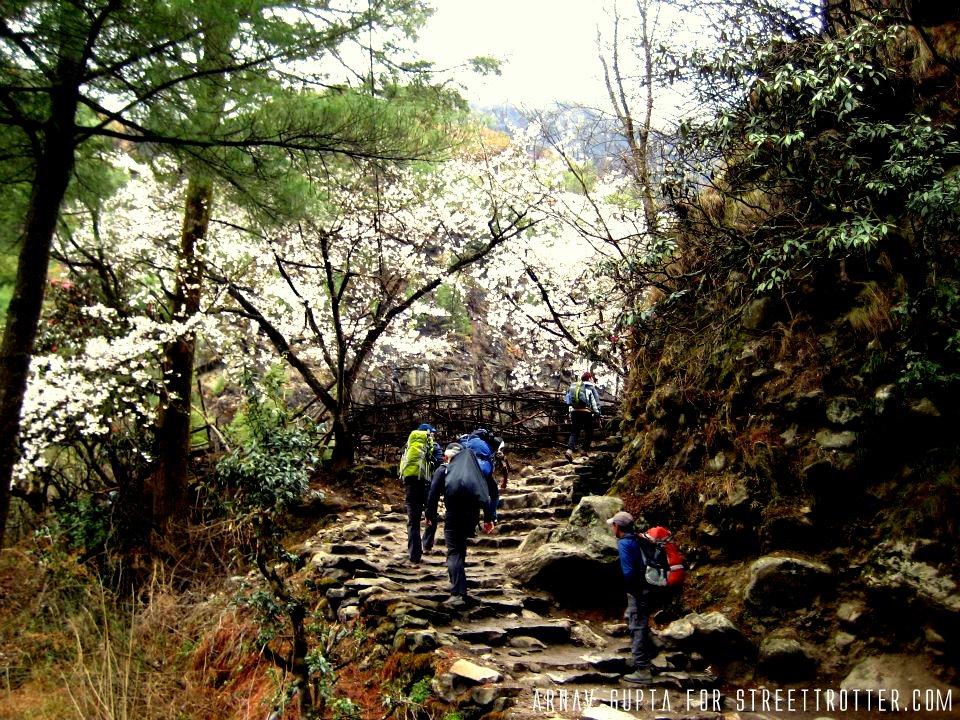
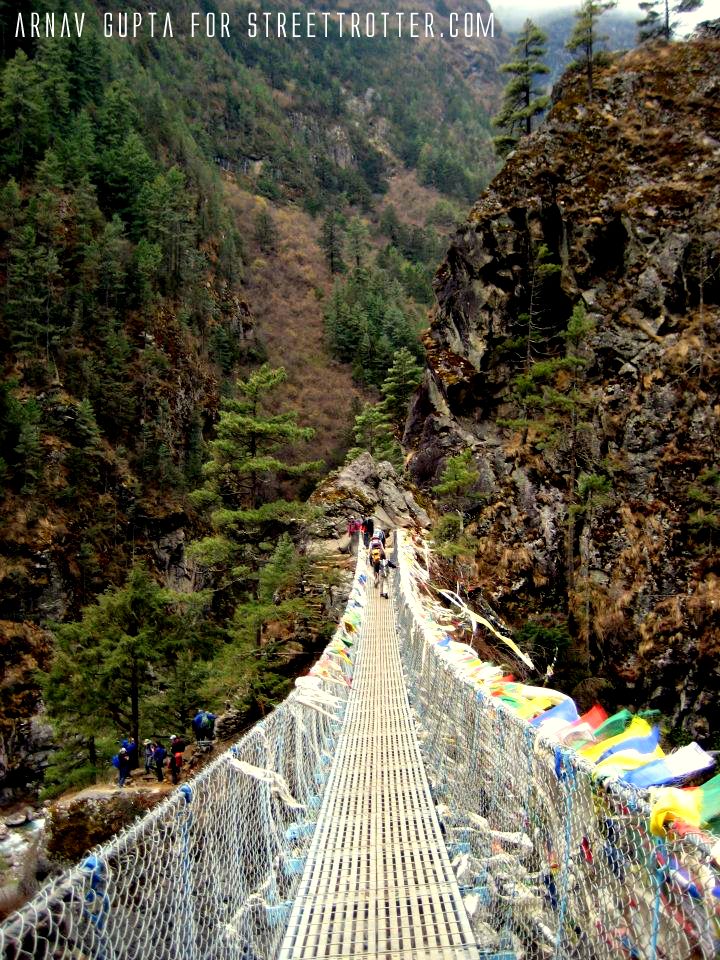

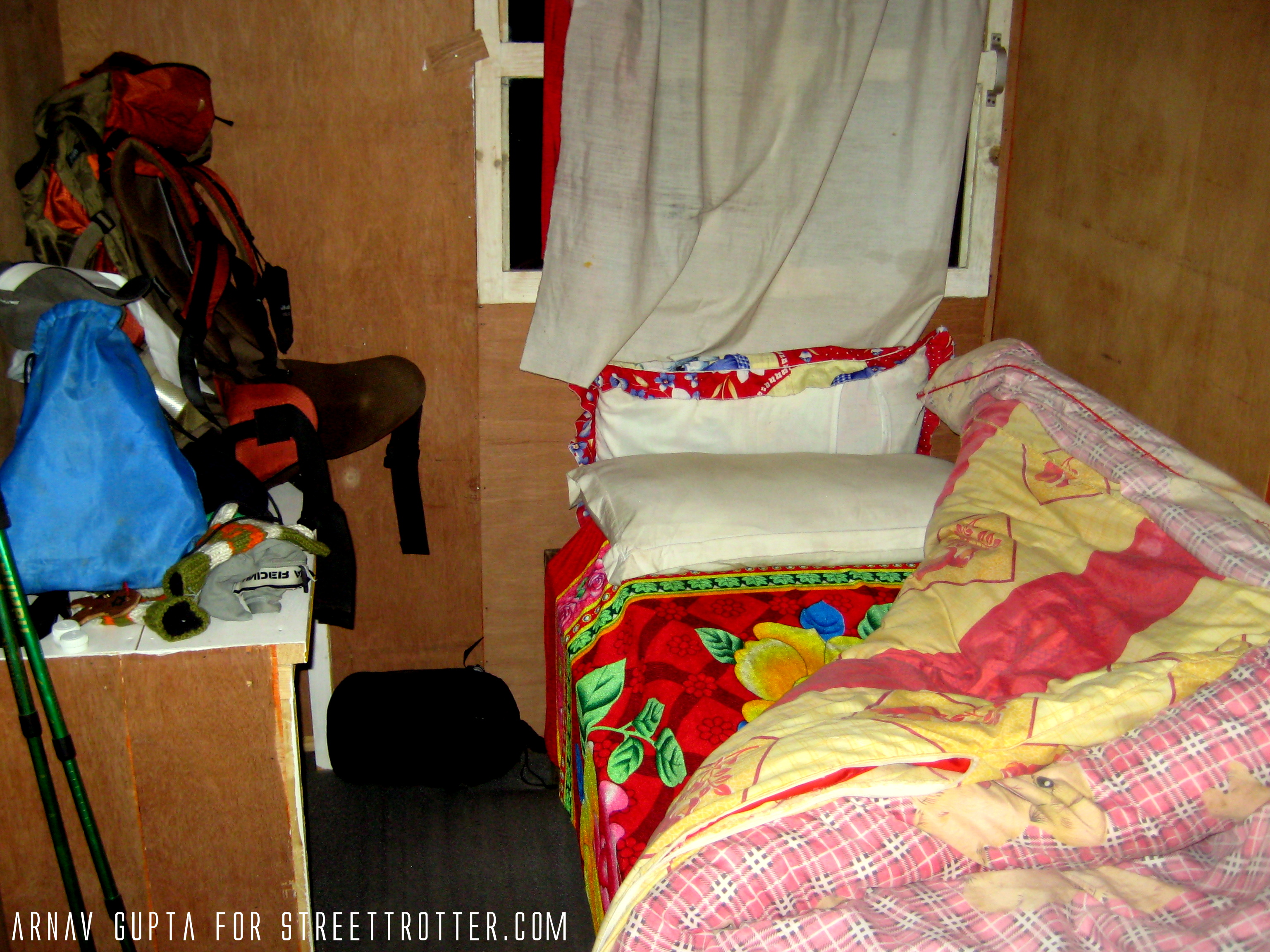
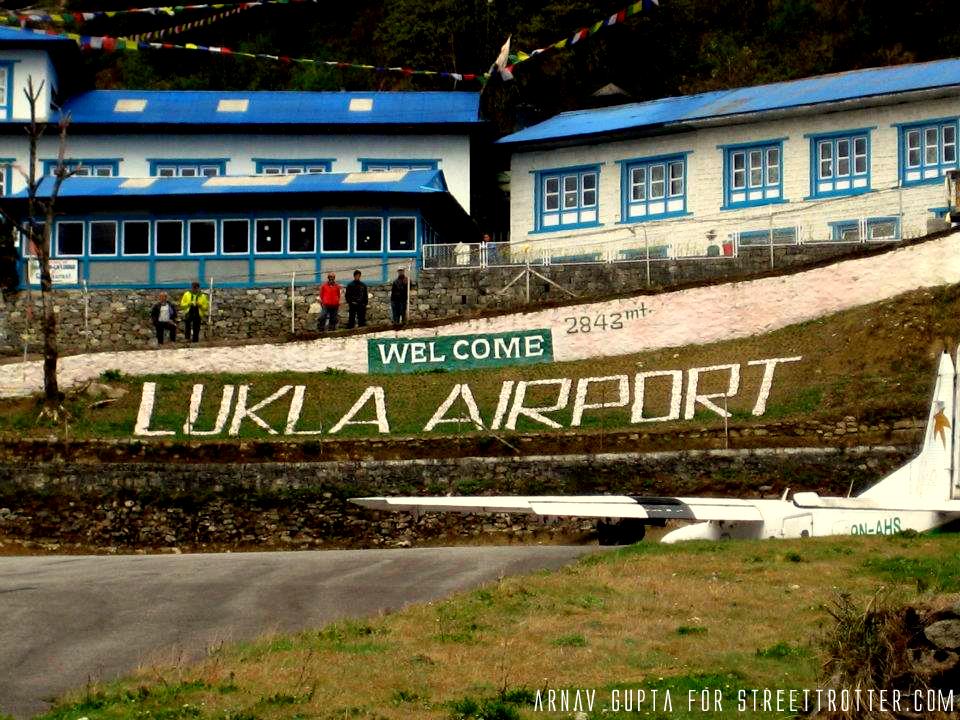
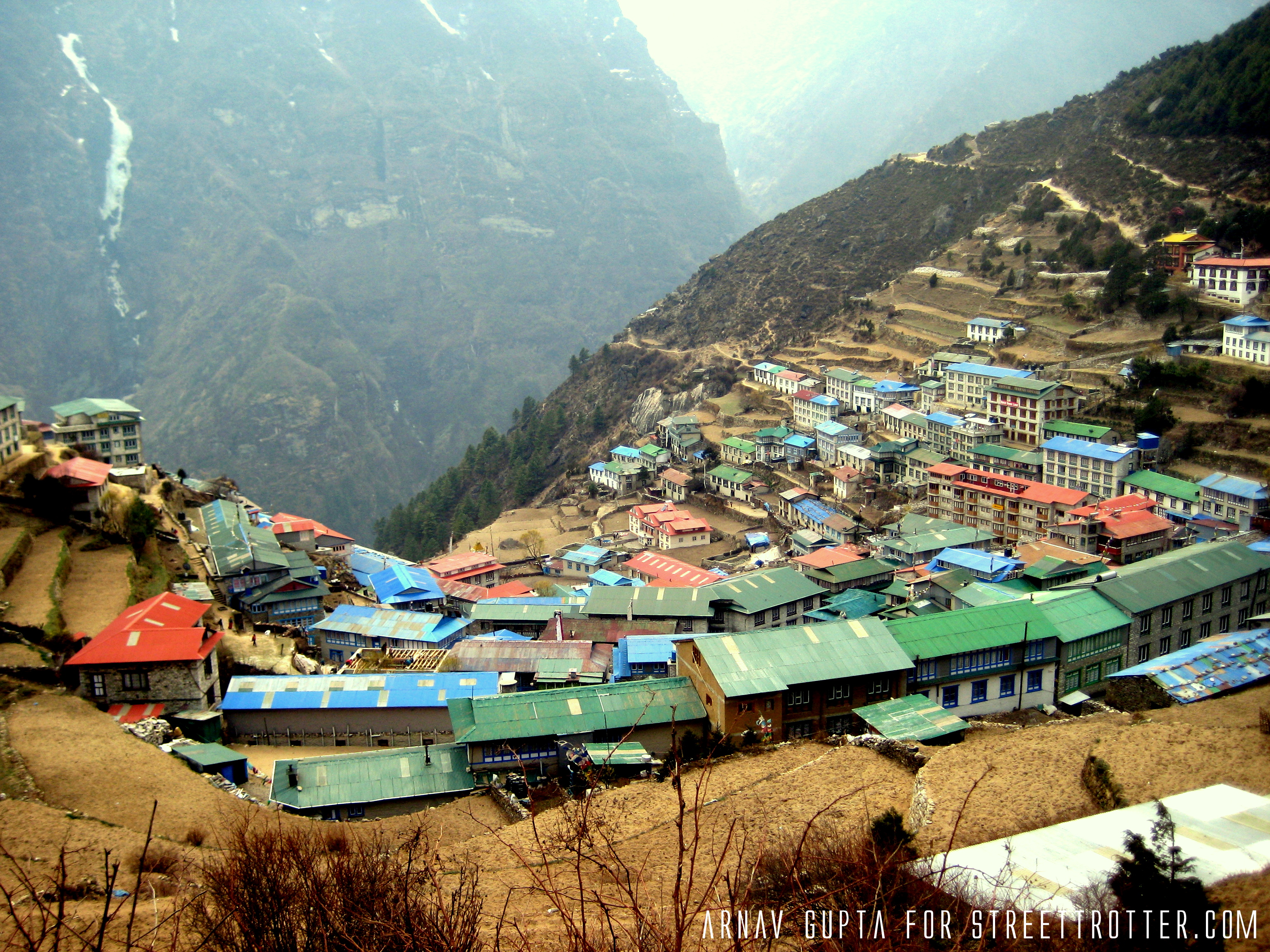
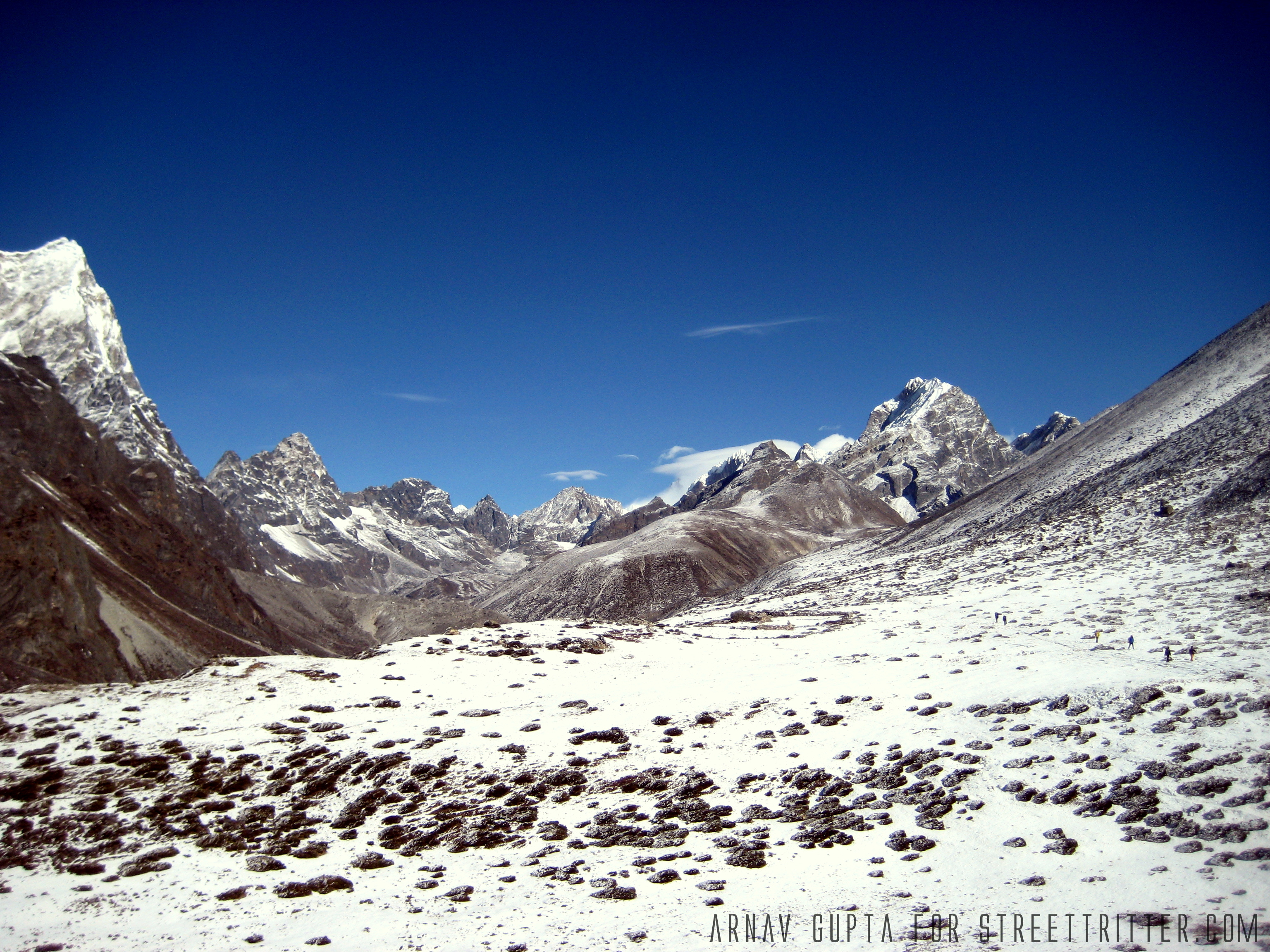
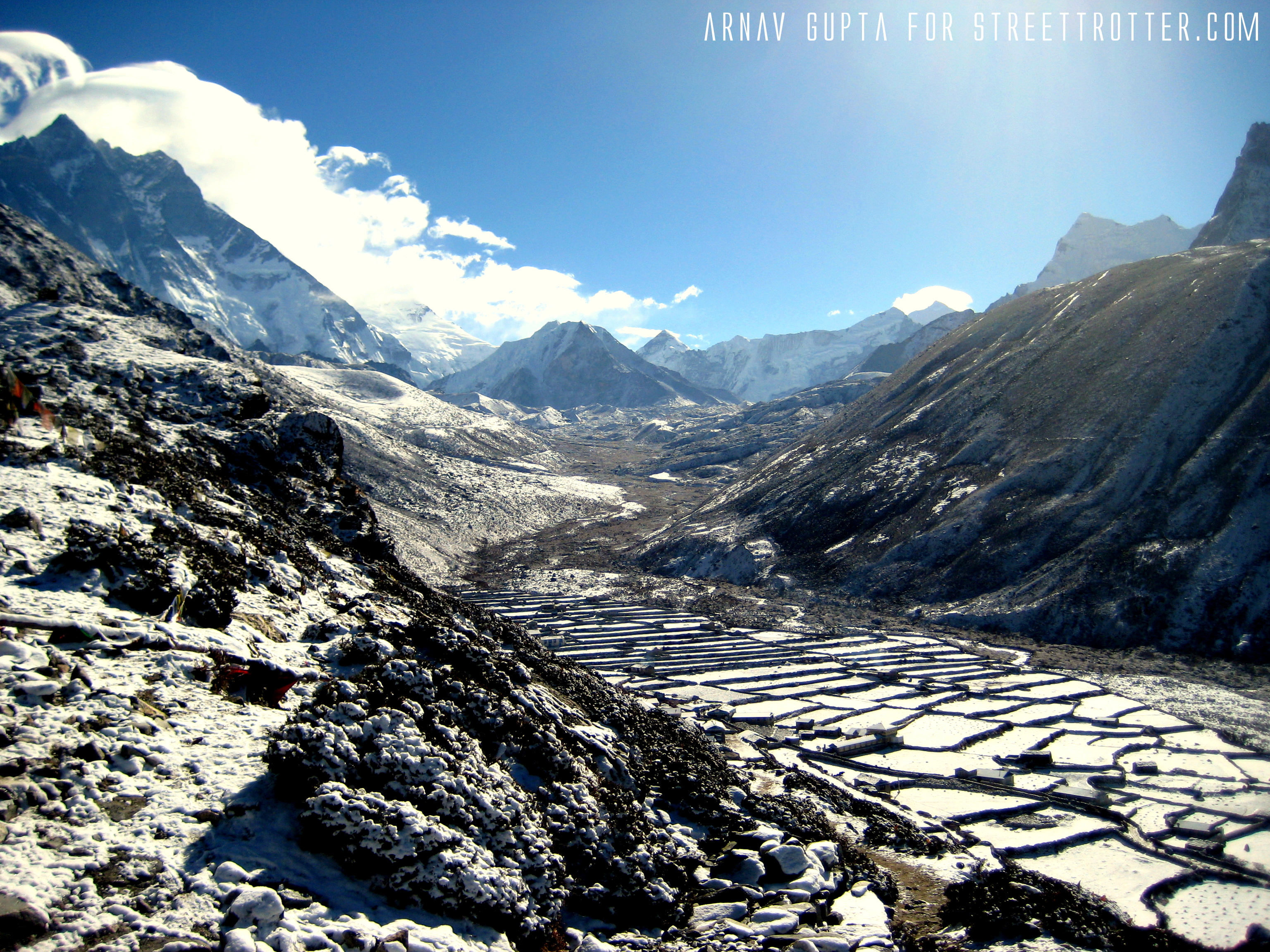
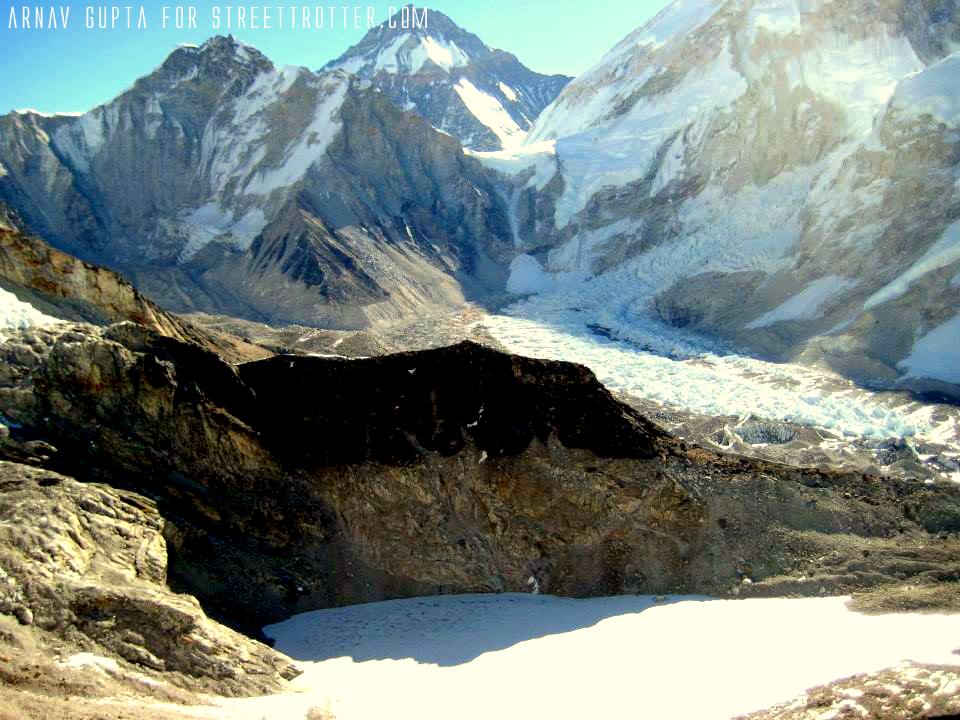
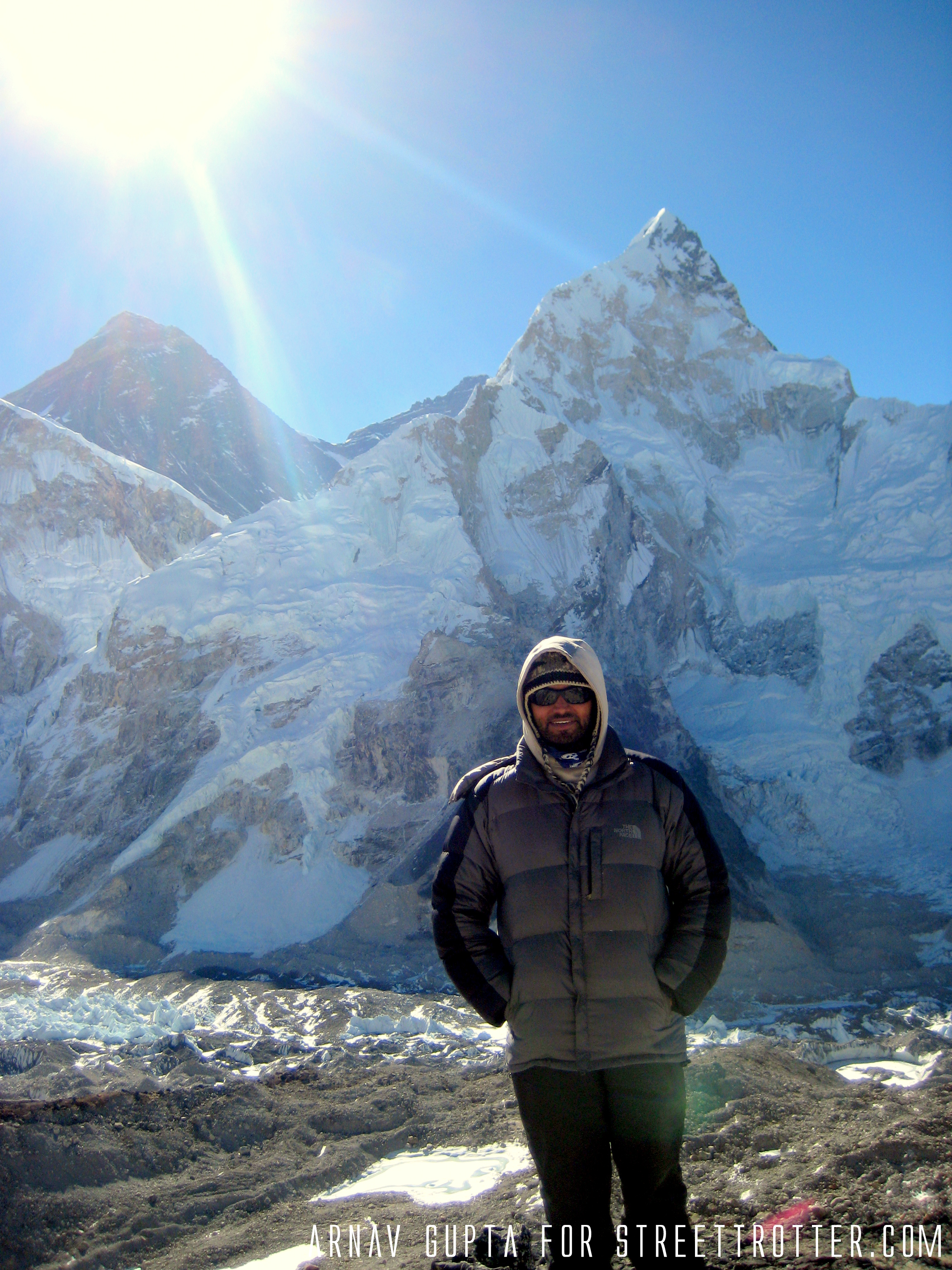

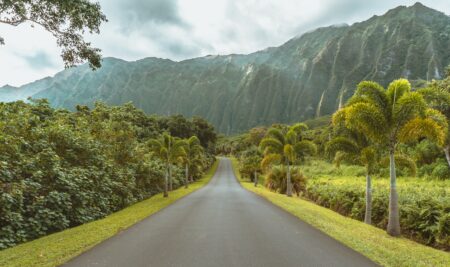
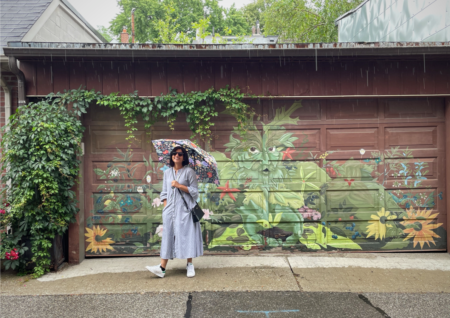




Wow…Top of the world, indeed trekking high up requires a commitment, lovely.